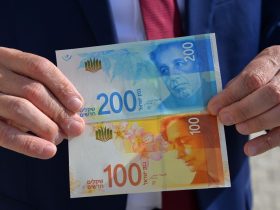By Tom Westbrook
SINGAPORE (Reuters) – Stocks struggled for headway on Wednesday while U.S. yields stood at or near decade highs along the curve as surging oil prices stoked inflation and set the scene for the Federal Reserve to project interest rates staying higher for longer.
futures fell 1% in the Asia session and are off 10-month highs. But at $93.52 a barrel, prices remain up 30% in three months as Saudi Arabia and Russia reduce output.
Higher energy costs led to a bigger-than-expected spike in Canadian inflation, lifting the on Wednesday and triggering selling in bond markets around the world. [US/]
Britain’s CPI, though still high at 6.7%, unexpectedly slowed, with a sizeable fall in the pace of core price rises sending sterling down 0.4% to an almost four-month low at $1.2334.
Benchmark 10-year Treasury yields had hit their highest since 2007 at 4.371% overnight and were last at 4.36%.
Two-year Treasury yields were within a whisker of a similar milestone at 5.09%.
dipped 0.1%. were down 0.3% and European futures were flat.
In Asia, MSCI’s broadest index of Asia-Pacific shares outside Japan fell 0.7% with Hong Kong stocks the biggest drag as China left lending rates on hold. ()
fell 0.6%. ()
All eyes are now on the Fed, with interest rate futures pricing implying almost no chance of a hike at 1800 GMT, leaving the focus to fall on the economic projections and Chair Jerome Powell’s news conference.
“The previous dot plot saw many participants expecting a cut in 2024. There is no reason for those dots to significantly move,” said Sam Rines, managing director at research firm CORBŪ in Texas.
“The ‘risk management’ aspect of the Powell presser is likely to be: positive in regard to downward adjustments to the policy rate as or if inflation wanes, (but) negative with respect to threats of future tightening.”
The Fed meeting leads a week jammed with central bank meetings, with policy announcements in Sweden, Switzerland, Norway, Britain and Japan all due later in the week.
BRACED FOR HAWKISHNESS
Foreign exchange markets have largely been in a holding pattern ahead of the Fed meeting, though the yen has continued to face pressure that early on Wednesday prompted a riposte from Japan’s top financial diplomat. [FRX/]
Masato Kanda told reporters that Japanese authorities were always in close communication with U.S. counterparts and that he wouldn’t rule out any options if “excessive moves persist.”
The yen is down 11% on the dollar this year as expectations firm for U.S. rates to stay high and Japanese rates to stay low. The yen hit a 10-month trough of 147.95 to the dollar late last week and it traded at 147.85 on Wednesday.
Benchmark 10-year Japanese government bonds remain are at 0.72%, but have been creeping towards the Bank of Japan’s adjusted tolerance for yields 1% either side of zero.
The euro held steady at $1.0684. Commodity exporters’ currencies were firm, with the New Zealand dollar holding modest recent gains at $0.5940 after strong dairy price gains at an overnight auction. [NZD/]
The held at $0.6454 and analysts said markets might be more sensitive to a dovish surprise from U.S. policymakers.
“We think that the market may already be semi-braced for a hawkish pause,” said DBS strategist Eugene Low in Singapore.
“Short of the Fed delivering beyond what is reasonably expected – that is, hiking rates or removing two cuts per year – we think upside to two-year and three-year dollar rates may be limited.”
Rising yields have kept a lid on gold prices, with last trading at $1,929 an ounce. [GOL/]
Wheat prices, which had been driven down by huge shipments from Russia, steadied on expectations of dry weather cutting output in Australia and Argentina. [GRA/]
Read the full article here













Leave a Reply